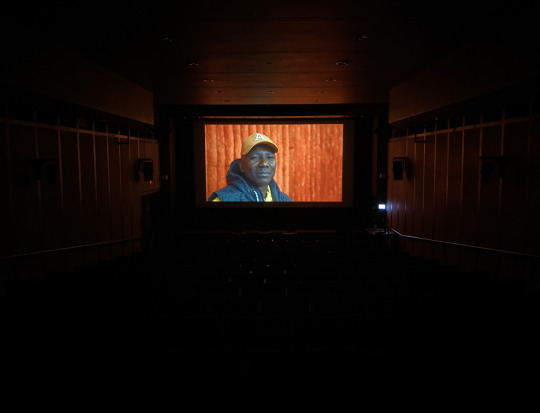#Gearoid
Text




The Brady that started it all
#legacy founder#Gearoid George Brady#Gearoid Brady#Gearoid#George Brady#George#the brady legacy#my oc#my ocs stuff#my ocs#my ocs do not steal#my ocs are my babies#my oc stuff#my oc edits#my ocs are my children#my sims#sims#the sims 3#ts3 screenshots#ts3 legacy#sims 3#simblr#ts3 simblr#ts3 simmer#ts3
12 notes
·
View notes
Link
In short, the list seems to picture a Mad Men-era businessman (dressed, depending on the price basket, in business suit, shirt and shoes, raincoat and wool-blend socks) or businesswoman (day dress, town shoes, cardigan, raincoat, and pantyhose) whose children attend an elite French, German, American or English school, drive to work while the maid cleans, eat a three-course meal and after work go to the theater before returning home for one Nightcap cognac.
#economic intelligence unit#bloomberg opinion#gearoid reidy#what's in the basket of goods used to compare cities?
0 notes
Text

Daily Dylan 2023 - 330
By Unknown, with Gearoid O'Leigh, Shane McGowan Joey Cashman
RIP Shane McGowan
30 notes
·
View notes
Text
'What can we learn from a country’s choice of when – or whether – to screen World War II drama Oppenheimer? Christopher Nolan’s blockbuster biopic was released in the US just after the anniversary of the Trinity test, the culmination of the Manhattan Project on July 16, 1945, that paved the way for the postwar Pax Americana. In South Korea, it will hit screens on National Liberation Day, which marks Tokyo’s Aug 15 surrender in World War II – something the bomb is credited with. And in Japan itself, which next month will see 78 years since Little Boy and Fat Man were dropped on Hiroshima and Nagasaki, respectively, the movie isn’t scheduled for release at all yet. That might reflect the country’s complicated views on the war.
In the US, the movie has reopened the debate on the bomb and whether it was a war crime. These revisionist discussions, which are based on what we know now, aren’t especially helpful. Contrary to some reports, Oppenheimer has absolutely not been banned in Japan – unlike some of its Asian neighbours, the country rarely takes such steps, even for politically insensitive content. But the movie’s distributor has yet to schedule a release date; assuming one comes at all, it will be some time after the Aug 6 and 9 memorials. Even on those anniversaries, Japan tends to avoid discussion of the rights and wrongs. That’s not to say its citizens have a uniform position – far from it. A 2015 poll by public broadcaster NHK found that 40% of the population agreed with the proposition that the US had no choice but to use the bomb. Interestingly, in Hiroshima, that number was 44% – higher than the country at large – and topped those who called it “unforgivable".
But if and when local audiences can have their say on the movie, perhaps it may trigger a discussion instead on Japan’s ambiguous, if not contradictory, stance toward nuclear weapons – a technology it publicly opposes, but simultaneously depends on for its survival in an increasingly hostile neighbourhood. As the country prepares for a historic shift in defense spending, the time for that debate is now. Postwar reality One rather typical headline from Kyodo News on Oppenheimer’s US premiere reads, “Biography of the ‘Father of the Atomic Bomb’ Released; Doesn’t Depict the Devastation of Hiroshima and Nagasaki". It’s a common sentiment on both sides of the Pacific, but Japan’s own depictions also often lack such historical context, tending instead toward sentimental looks at the rank-and-file caught up in events. The horrors both visited on the country and those Japan committed elsewhere are treated more akin to a natural disaster. Not retreading old arguments might be wiser, of course. While the US is still chewing over decision to use the bomb back then, Japan has largely accepted the postwar reality. In a recent survey, a record 90% praised the US-Japan alliance for helping preserve the country’s peace and safety, a figure that has steadily climbed over the past 40 years.
Last year, Tokyo came close to starting a serious debate on the appropriateness of its three non-nuclear principles, under which the government is committed to not possessing, producing or permitting atomic weapons to be brought into the country. Early in 2022, Shinzo Abe suggested that it was time to discuss hosting US nukes. At the time, Abe was a senior voice in the ruling Liberal Democratic Party, one who many then thought could have had a third spin as prime minister. “We should not regard a discussion on how the world’s security is maintained as taboo,” Abe said at the time, referencing a commotion caused in 2006 when then-LDP policy chief Shoichi Nakagawa suggested discussing the building of atomic weapons in response to North Korea’s first nuclear test. Bemusing as it may seem now, concerns ran high at the time over Japanese remilitarisation rather than the rapidly strengthening China, and the comments caused international alarm.
A few years earlier, a deputy vice-minister of defense was forced to resign after making similar remarks. The spectre of a remilitarised Tokyo Many divisions in Japan have moved on since, but this debate isn’t one of them. The idea of weapon sharing was flatly rejected by prime minister Fumio Kishida, whose family hails from Hiroshima and is a lifelong denuclearisation advocate. Abe was assassinated before he could capitalise on Kishida’s relatively weak public support. Lacking a significant voice, the discussion has never really launched. In May, the prime minister took the Group of Seven leaders to view the bomb’s aftermath in Hiroshima, with the premiers pledging to work toward “an ultimate goal of a world without nuclear weapons with undiminished security for all". Contrast that with the alarmism of former US secretary of state Henry Kissinger, who the same month said Japan was “heading towards becoming a nuclear power in five years". This is a common refrain of Kissinger’s, who for decades fretted over the spectre of a remilitarised Tokyo and pushed for the US to move closer to China to restrain it. Kishida will have no such plans. But he should not be so quick to dismiss the discussion. In a world where conflict between the US and China seems increasingly possible, Japan must not be afraid to have real talks about how it would respond, including what part atomic weapons would play — and what might happen if the US nuclear umbrella (perhaps in the hands of a less reliable White House) was no longer extended over the country.
Russia’s invasion of the Ukraine has powerfully demonstrated that at least some of the post-Cold War assumptions were wrong; Japan can’t afford to be left in a decades-old debate when conflict around Taiwan seems closer than ever. Oppenheimer may have revived an unhelpful reinterpretation of WWII. But assuming viewers in Japan get a chance to experience it, it might trigger a more useful discourse in the country that experienced the horrors firsthand.'
#Oppenheimer#Christopher Nolan#Henry Kissinger#National Liberation Day#Shinzo Abe#Fumio Kishida#Ukraine
2 notes
·
View notes
Photo




Thesis Study 03: Ah New Riddim, 2022
The journey towards making this installation, this documentary, and this body of work has been fluxed with moments of discovery, failures, successes, and triumphs, albeit small and transitory. Unlike previous iterations (Constructs and Context Relativity I & II), the writing has been instrumental to the project’s development and countenance. Major progress in production has emerged through significant writing, research, and ruminations on concept, lineage, artistic approach, and methodology. This semester, I presented new footage in an extended linear excerpt of my thesis to my cohort and faculty in MIT’s School of Architecture + Planning Bartos theater.
I look forward to piecing all parts of this project together in the days ahead. Although it is rather ambitious, I am undoubtedly up for the challenge. Special thanks to faculty and staff of MIT’s Art, Culture and Technology program and guest critics, Tania Bruguera and Stefanie Hessler.
Working Statement: Ah New Riddim is an immersive multi-channel installation and interactive documentary that examines the spatial-temporal relations of memory and place embedded within the cultural appropriation of dancehall in American urban space. The film utilizes 80’s dancehall archival footage of my father and the quiet of black subjectivity to expound the relationship between black globality, dancehall, and American locality. As a placemaking production, how do the body’s grammar, symbols, and socio-cultural practices articulate notions of locality? In Ah New Riddim, dancehall functions as a placemaking production. It makes visible the temporal politics of locality, and evokes a sweet sense of home grounded in the cultural assemblage of identities and collective memory. Although ‘back home’ is never made visible in the film, the notion of “back home” translates as a feeling activated through the presence of the body and material objects in relation. The project demonstrates how space is transformed and contested through the spatial practices of its locale. It utilizes the quotidian elements of my subject’s inner life to decentralize universal narratives imbued within visual representations of the urban and considers the potential of interactive storytelling, immersive inter-sensory installation, and performance in exploring sensorial evocations of place.
Credits:
ACT Final review documentation of my presentation. Image courtesy of Gearoid Dolan, ACT.
ACT Final review documentation of my presentation. Image courtesy of Gearoid Dolan, ACT.
ACT Final documentation featuring footage of Architecture in East Flatbush.
ACT Final documentation featuring contemporary footage of my father, Joseph Neptune.
5 notes
·
View notes
Text
On Oct. 20, currency traders saw something that hadn’t happened since June 1990—the Japanese yen to U.S. dollar exchange rate eclipsed 150 to 1.
The yen has seen shocking depreciation over the past year. In January 2021, the rate was 103 to 1, which has been roughly the average exchange rate for the last 30 years. In September 2021, the rate hovered around 110 to 1, and it didn’t surpass 120 until the end of March 2022. But since then, the exchange rate has skyrocketed, only settling back down slightly to 140 to 1, which is about where it sits as of late November. It’s a new status quo for the yen after 30 years of consistency, and economists on both sides of the Pacific say it’s not going back to the old norm any time soon.
“The yen-dollar exchange rate is important to Japan because Japan relies on imports for energy and food,” said Takuya Hoshino, an economics researcher at Dai-ichi Life. “The depreciation of the yen leads to an increased financial burden on households and businesses.” The shift also sinks Japanese wages relative to the dollar, meaning that more Japanese go abroad to work and fewer foreign workers come to Japan. That’s a disastrous trend for Japanese industry, which has been facing severe labor shortages in most major sectors due to a shrinking population and mass migration from rural to urban areas.
On Sept. 22, the Japanese government intervened for the first time in 24 years by buying yen and selling dollars. But a history of failed past interventions is a big reason why the Bank of Japan (BOJ) hasn’t taken aggressive action to defend the yen. “The only time the intervention efforts truly worked was when it was joint interventions with other G-7 nations,” Kathy Lien, a managing director at BK Asset Management, told CNBC. “The Bank of Japan and the Ministry of Finance have a history of failed interventions—we know it; they know it.”
And while Japan’s government and central bank have adamantly opposed too much intervention in the yen, the wide-ranging economic effects of this plummeting exchange rate status quo have hit Japan’s households hard. They also pose serious underlying questions about the path to renewed competitiveness for Japanese businesses and any hope of better wages for workers.
The core policy issue underlying this year’s depreciation comes from the gap between interest rates in the United States and Japan. Lower interest rates encourage borrowing, which stimulates the economy, whereas higher interest rates restrain borrowing but help curb inflation. BOJ Gov. Haruhiko Kuroda has been stubbornly against raising interest rates, whereas in the United States, the U.S. Federal Reserve has raised interest rates from 0.5 percent to 4 percent so far this year.
This interest rate gap has been the topic of much discussion. Bloomberg opinion columnists Daniel Moss and Gearoid Reidy note that raising interest rates would cause Japan’s pile of debt to surge, causing increased spending plans by the government to get thrown out the window and devastating households. As a result, Moss and Reidy argue that the BOJ is wiser to accept the weaker yen.
On the flip side, per journalist Leika Kihara at Reuters, Japanese policymakers are desperate to revive consumer demand and wage growth in 2023 to match inflation. Boosting Japan’s stagnant wages has also been a core policy objective of Japanese Prime Minister Fumio Kishida. “It’s a once-in-a-lifetime opportunity for Japan to finally see a positive wage-inflation cycle kickoff,” a source familiar with the BOJ told Reuters regarding a potential increase in interest rates.
Atsushi Nakajima, a consulting fellow at Japan’s Research Institute of Economy, Trade, and Industry, told Foreign Policy that interest rates aren’t the only factor in the spiraling yen. “The increase of costs in Japan’s massive imports of energy as well as food plus the deterioration of Japanese industry’s competitiveness compared to American and European businesses are also affecting the weaker yen,” Nakajima said.
In the past, when the yen became weaker, the weak yen supported economic growth by encouraging exports. “But this time,” Nakajima said, “we’re not seeing as much of this effect because Japanese industry has globalized due to the shrinking market in Japan, so [the weak yen] is a much more of a mixed bag of pros and cons for businesses.” Japanese companies that can take home profits in U.S. dollars see their money go further. But Japanese companies that have big costs in imports are seeing those costs surge.
Put simply, Japan’s import sector is suffering, whereas the export sector is benefitting—only not as much as you’d typically expect. The country’s huge automobile industry hasn’t been able to take advantage of the exchange rate because of constraints on acquiring semiconductors and other necessary components due to lingering supply chain issues from the COVID-19 pandemic. Still, other export sectors like information technology and the microprocessor industry have been able to take advantage. The pandemic-hit tourism sector is also a huge winner, with inbound tourists encouraged to visit and spend more money in Japan thanks to a favorable exchange rate.
In a list of pros and cons for a weaker yen, the cons certainly seem to outnumber the pros this time. The growth in purchasing power in Japan hasn’t kept up with a relatively low inflation rate, meaning that real wages are going down. This trend, combined with a weaker yen, results in a lower quality of life for ordinary Japanese people: The cost of goods is rising, wages aren’t, and the yen now purchases way less abroad than it used to. So far, the Japanese government has lessened the blow on households by pouring 3.5 trillion yen into energy and food subsidies, a hefty budgetary investment that can’t last forever.
“Some companies do have ‘inflation allowances’ that allow them to temporarily raise wages to compensate for price hikes,” Hoshino said. “[But] the increase in prices of necessities and energy makes it harder for personal consumption to increase.”
The weak yen further hurts companies by driving away foreign talent. Hundreds of thousands of foreign workers in Japan from countries like Nepal and Vietnam wire money to their home countries and are now struggling to support their families back home. Industries like food processing, agriculture, and manufacturing already heavily rely on foreign laborers, especially in rural areas. The exacerbated wage difference between Japan and other countries with labor market gaps, such as Germany and Australia, poses a real risk to companies that need these workers.
The government budget is also a victim of a sliding yen. A weaker yen means that foreign currency payments on defense equipment are a lot more expensive. The exchange rate also affects public works and infrastructure projects that rely on imported raw materials. And while the Ministry of Finance has funds set aside to compensate for exchange-rate fluctuations, agencies are already struggling to make ends meet, looking to trim low-priority budget items where possible.
Nakajima pointed out that in some ways, Japan’s economic situation is currently better for ordinary consumers than that of most other developed countries. “There is a rebound in demand after the lifting of pandemic lockdowns and restrictions, so we’re seeing pent-up demand affect the economy,” he said. “The Japanese government also just lifted the restriction on inbound travel, which gives an additional stimulus to the economy.” Those factors, along with new government subsidies to promote domestic travel, combine to stimulate the economy at just the right time.
“A historically weak yen plus the fear of geopolitical risk is good timing for Japan,” Nakajima explained. “The government intends to put trillions of yen to advance high-tech industries, so this kind of support of the government can both reduce future risks and provide better possibilities for growth.”
These major investments offer some hope to help begin correcting Japan’s weakened economic competitiveness. However, many of the problems are more structural. Per a recent study by Takeshi Makita at the Japan Research Institute, the biggest factors for Japan’s decline in business competitiveness are slow-to-react management, a lack of enthusiasm for and understanding about digital technology, and a delayed response to globalization.
“The growth of added value, or productivity, in Japan has been weaker for the last 20 years. The result is that many Japanese companies are seeing their profit margins getting reduced, which means that they can’t raise the wage for employees either,” Nakajima said.
“What is required are reforms that improve Japan’s underlying efficiency,” writes Richard Katz, a senior fellow at the Carnegie Council for Ethics in International Affairs. “The Kishida administration is set to issue a five-year plan that could do a lot to improve the situation if lofty goals about income distribution and nurturing startups are turned into concrete policies. Unfortunately, recent conversations with policymakers in Tokyo suggest that, while a few of the necessary positive steps will be taken, they will not be nearly enough to turn the ship around.”
With Kuroda’s refusal to nudge interest rates, for better or worse, the weaker yen is here to stay. And although the current situation for Japanese people on the ground isn’t as bad as it could be given the lower yen, a trend that started under former Japanese Prime Minister Shinzo Abe’s famous Abenomics continues: Ordinary people in Japan are simply getting poorer, even as the economy and corporate profits grow overall.
Employment is high, but wages aren’t going up; interest rates are low, but households hoard their savings; the GDP has grown, but productivity has failed to keep up. And now with the plummeting exchange rate, the cost of food and utilities are spiking.
“I don’t foresee a change in the current situation with the yen in the coming months,” Nakajima said. “My interest is in the measures pushed by the government to improve the competitiveness of Japanese industry. That’s what matters more.”
2 notes
·
View notes
Text
instagram
#art#artist#picoftheday#miniature#creative#artwork#photography#contemporaryart#haticeözsoydan#irish history#irish pub#irish art#diorama#diy projects#craftbeer#Instagram#SoundCloud
0 notes
Text
0 notes
Text
youtube
Thommern and Gearoid are definitely main characters in this story. I do need to try other pawns but we’re working so well my healer hardly needs to heal
0 notes
Text





Pics of George & Gia at the Brady’s 2023 Gala
-
@walkingdeadlightsimmer
#Gearoid George Brady#george brady#au george#George and Gia#au collab#au combined legacy#the Brady legacy#my ocs#my oc edits#my ocs are my children#sims#my sims#my oc#the sims 3#my ocs are my babies#sims 3#sims 3 edit#sims 3 family#sims 3 screenshots#sims 3 story#sims 3 legacy#sims 3 blog#sims 3 simblr#sims 3 pictures#ts3 story#ts3 seasons#ts3rp#ts3 screenshots#ts3 legacy#ts3
23 notes
·
View notes
Text
has anyone done an identifying Pokémon in posts gimmick blog yet.
I’ve done enough of the gearoid who’s that Pokémon to be able to identify a couple but I’m no expert
0 notes
Text
Gearoid Reidy: Musk must preserve Twitter’s most vital function
Gearoid Reidy: Musk must preserve Twitter’s most vital function
For all the controversy surrounding his purchase of Twitter Inc., Elon Musk has at least one thing right: Twitter really is “like open-sourcing the news.”
The world’s richest man has long been an advocate for “citizen journalism,” but since his takeover of the social media site he’s been particularly talkative on the idea of ordinary people, rather than what he terms media elites, being the ones…

View On WordPress
0 notes
Text
Limerick male prosecuted for taking dog 'for a walk' without owner's consent
New Post has been published on https://petnews2day.com/pet-news/dog-news/limerick-male-prosecuted-for-taking-dog-for-a-walk-without-owners-consent/?utm_source=TR&utm_medium=Tumblr+%230&utm_campaign=social
Limerick male prosecuted for taking dog 'for a walk' without owner's consent

A GUY TAKING a dog from a house and taking it for a walk was an “uncommon kind of situation” stated protecting lawyer Michael O’Donnell at Kilmallock Court. James Heffernan, aged 43, of Main Street, Kilfinane pleaded guilty to one count of robbery at The Homes, Kilfinane on September 11, 2020. Inspector Gearoid Thompson stated […]
See full article at https://petnews2day.com/pet-news/dog-news/limerick-male-prosecuted-for-taking-dog-for-a-walk-without-owners-consent/?utm_source=TR&utm_medium=Tumblr+%230&utm_campaign=social
#DogNews
0 notes
Text
'It's one of the most eagerly anticipated movies of the year and the Irish premiere of Oppenheimer drew a glittering line-up of movie fans.
Although the film's stars are refusing to take part in any promotion for the film as part of the Screen Actors' Guild strike, it didn't stop the many movie fans from going along to enjoy the first screening of Christopher Nolan's new movie.
Many couples chose it as the perfect date night at the IFI in Dublin including Doireann Garrihy and Mark Mehiga, with DWTS host Doireann wowing in a bright orange shorts suit from Penneys.
Irish star Cillian Murphy heads up a star-studded cast as J. Robert Oppenheimer, the 'father of the atomic bomb' who led the United States' development of the first nuclear weapons during World War II.
The Cork native stars alongside Emily Blunt, Matt Damon, Robert Downey Jr, and Florence Pugh in the movie.
Earlier in the week, as the world premiere was getting underway in London, the entire cast left the cinema before the film began as part of the protest against the breakdown of pay negotiations for screenwriters.
Fresh from his impressive run in The Price at The Gate Theatre, former Ireland AM presenter Simon Delaney was joined by his wife Lisa for a well-earned night out.
New parents psychotherapist and pundit Richie Sadlier and his wife Fiona Ward had a night off from nappy duty as they brought their niece along to see the movie.
Terrie McEvoy and her husband David Fitzpatrick also got a first look at the much-buzzed-about flick.
The influencer wowed in a white textured jumpsuit which she paired with a YSL clutch and gold jewellery.
It wasn't just loved-up couples that made an evening of it though as fashion designer Helen Steele was joined by her brother.
Magician Keith Barry enjoyed a family night out with his daughter Breanna.
Former newsreader Anne Doyle enjoyed some downtime after a busy few months writing ghost stories for a new book.
Irish actress and TV presenter Jenny Buckley rocked a very on-trend white blazer for the event.
Irish singer Róisín O also attended the premiere alongside Gearoid O'Dea…'
#Oppenheimer#Cillian Murphy#Christopher Nolan#Emily Blunt#Matt Damon#Florence Pugh#Robert Downey Jr.#Screen Actors Guild
1 note
·
View note
Text
The West Has Failed: North Korea Is a Nuclear State
The West Has Failed: North Korea Is a Nuclear State
https://www.washingtonpost.com/business/the-west-has-failed-north-korea-is-a-nuclear-state/2022/10/23/e1511926-531e-11ed-ac8b-08bbfab1c5a5_story.html Analysis by Gearoid Reidy | Bloomberg, October 24, 2022,
The world might not want to hear it, but Kim Jong Un might be right.
“There will never be such a thing as our abandonment of the nuclear weapons or denuclearization,” Kim declared last…
View On WordPress
0 notes
